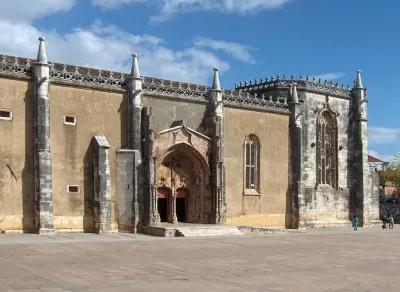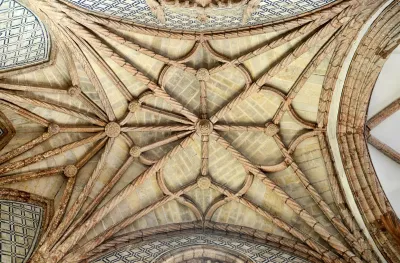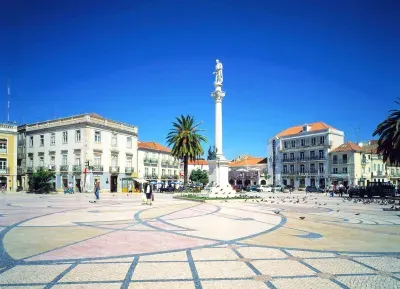
Monastery of Jesus - Setúbal Georges Jansoone CC BY-SA
Setubal Monastery of Jesus - Central nave Ruvasa CC BY-SA
Manueline portal Inês Leonardo CC BY-SA
Mosteiro de Jesus de Setúbal ceiling Joaquim Alves Gaspar CC BY-SAMosteiro de Jesus
Setubal's Monastery of Jesus was built in the 1490s as a convent for Poor Clare nuns, a Franciscan order. The building represents some important moments in Portuguese architecture being one of the earliest examples of the Manueline School of Architecture.
The outside of the Arrabida Stone church has no spire and features a rectangular nave leading to the polygonal apse at one end and a bell tower at the other. Inside of the church the nave is unusually narrow and features attractive twisted columns carved from pale pink Arrabida stone. The interior is also decorated with traditional 17th century azulejos patterned tiles. The main altar and pulpit date from the 18th century. The overall effect is minimalist and aesthetically pleasing. This is a good place to come for quiet contemplation, especially out of the main tourist season.
There is a 16th century church with a small art museum attached. The original building was significantly damaged by Portugal’s devastating earthquake in 1755
The former convent building alongside the church is home to the Museu de Jesus, a small art museum with some 15th and 16th century paintings of the Flemish and Portuguese Schools, most notably 14 paintings depicting scenes from the life of Christ which have been attributed to the School of Jorge Afonso. Also on display here is Jorge Afonso’s 16th century altarpiece, removed from the church in the 18th century and a number of old documents, coins and other archaeological artefacts.
Address
Rua Acácio Barradas 2Setúbal2900-197Phone
+351 265 537 890Attraction type

Setúbal travel guide »
Setubal and its surrounding area are awash with history dating back to before the Roman period, indeed it is said that the town was founded by a relative of Noah. Its relationship with the sea is also remarkably long-lived with a fish salting industry which started in the 1st century AD and a large, protected harbour - the third largest in the country - from where, in the era of the Discoveries,…